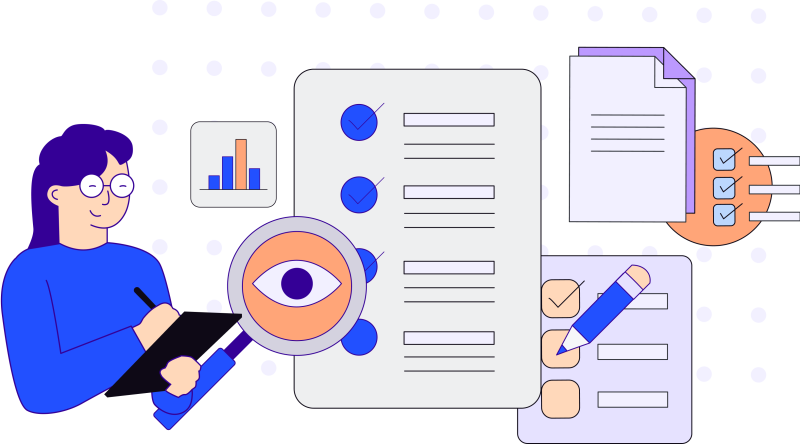Racing your partner to empty the dishwasher. Tossing clean pairs of socks into an open drawer like you’re LeBron. Organizing the pantry like a game of Tetris. It’s a fact: Gamify mundane tasks and get the job done.
Managing money is a chore for most people, and a costly one at that. If it’s not done well, they can really pay the price. Just ask the 52% of Americans who feel like they haven’t saved enough for retirement.
We’ll take ‘Uh Oh’ for $1,000, Alex.
Implementing gamified elements could undoubtedly up your user experience. But what if it could also be used for good, too? Making a stickier Fintech product means giving your users the building blocks they need to envision a better financial future — and make it a reality.
The tribe has spoken: It’s time to gamify your product.
4 Reasons to Add Gamification to Your Fintech Product
Gamification is simply the act of adding game-like elements and mechanics to an otherwise non-game product or experience in order to make them more attractive, engaging, or fun.
While we’re all for making anything more fun, there are some pretty convincing reasons to add gamification to your product’s experience. Here are our top favorites:
Attention spans are short and people get bored easily. Making your product interactive can take the dullness out of budgeting and make it more fun to use.
According to a report by Statista, there are over 1.6 million active mobile gamers worldwide. By 2025, this number is expected to be around 2.2 million. People like playing games.
Gamification motivates users to keep using a product in order to understand it better. The more badges, stars, or points they rack up, the more they want to keep going (and while they’re at it, they’re becoming more financially literate!).
According to FinancesOnline.com, companies that introduced gamification elements to their products reach up to a 700% increase in conversion rates. Need we say more?
Avoid the Dark Side of Gamification in Your Fintech Product
Gamification is everywhere. It’s the way you reward your kids for a job well done at school. It’s your free cup of coffee after you’ve bought 10 drinks at your favorite shop. It’s anything that adds an element of a game experience to an otherwise game-free product or experience.
The reason behind it is psychological: When we are rewarded, our brain sends out dopamine, the feel-good hormone. We chase that feeling by repeating those actions. It’s why you just can’t quit your game of Candy Crush.
This flood of dopamine is good, to a certain extent. But it can get addictive — fast. And that’s bad news for Fintech products specializing in investing or trading.
Robinhood found this out the hard way. When a user made an investment, confetti would shoot out. Cue the dopamine, and cue the urge to keep investing — something that might not be a good idea for anyone who doesn’t quite know what they’re doing.
Gambling is a big risk when it comes to lending gamification aspects to your Fintech product. And it’s tricky. There is a fine line between what makes something irresponsibly addictive or not.
How do you make sure what you’re producing isn’t the weakest link?
Phone a friend Don’t be shy with asking for feedback in your user testing. Conduct focus groups to make sure there’s nothing you’re missing.
Drop some knowledge Err on the side of customer protection and education. Make sure your users know everything they need to know in order to make informed decisions. Provide financial literacy, or essential friction to slow down their process and give them a chance to think.
Don’t risk it Look at each gaming element in context. If there’s any hint of gambling or encouraging otherwise risky behavior, nix it. We have faith you’re creative enough to come up with something else just as (responsibly) sticky!
How to Get Your Users’ Head in the Game — Responsibly
Introducing game-type elements to your product can be simple, but it’s also easy to get carried away. In order to avoid rivaling the set on The Price is Right, follow these tips.

Remember your product’s core purpose What did you originally set out to create? What user needs does your product solve? Only add elements that up the value of your product — not take away from it.

Decide on your core loop Your core loop is the feature that is inseparable from your product. Focus on that, and make it really good. Some examples of the stickiest core loops are: Robinhood’s singular CTA to trade, leaving nothing else to distract the user from taking action. Gemini’s savings account that users can add cryptocurrency to in just a few clicks. Or Public’s feed where users can talk about what they’re trading and why.

Make saving money cool Encourage users to save money by creating goal-based challenges that are simple to understand but hard enough to pique curiosity. For example, you could reward users for building good savings habits by popping in a celebratory badge or animation, racking up their points, or adding them to a leaderboard. Progress bars, streak counts, and unlocking new features can motivate them to keep going.

Boost their financial know-how The finance world is full of jargon, much of which your users have no clue about. Help them out by educating them on what common terms or acronyms mean. Create puzzles or quizzes to make the learning more fun. And, create an easy way for users to both search for and save important terms and tips in their profile.

Build a community Everything’s better with friends. Provide a community for your users by adding elements like avatars and usernames, messaging components, newsfeeds, and forums. Think about linking your product to a social network so friends can encourage each other and give each other tips. eToro does this really well by helping new investors learn how to invest by allowing them to copy smart trades from more senior traders.

Have (flexible) rules Games need rules, right? They provide structure, which helps people feel in control. And if there’s ever a time people want to feel in control, it’s with their money. So, for example, you can give your users guidelines on what they should be investing in based on their goals.
Three Fintech Products That Do Gamification Right
If you need a little inspiration on how to work game-like elements into your product, take it from some Fintech product leaders.
YNABYou Need a Budget (YNAB for short) helps users budget and manage personal finances. Users have a set of four rules that provide simple guidelines for how to keep control of your budget. Charts and analytics let users track savings progress, crush debt, and gain investments and net worth. Rewards in YNAB are more intrinsic to the user; they feel happier and less anxious about their finances.
AcornsAllows users to micro-invest their cents into big savings. It costs $1-3 to use, but allows users to round up each purchase, squirreling the remainder away into high-yield stock portfolios.
YottaEncourages users to save by incentivizing them with rewards and prizes through a lottery-based system. It’s better than any scratch-off ticket!
Gamifying your Fintech product doesn’t have to be complicated. There are many ways to add elements of fun, education, and motivation to help people have fun managing their money — and convince them to keep coming back.
So what do you say, deal or no deal?










